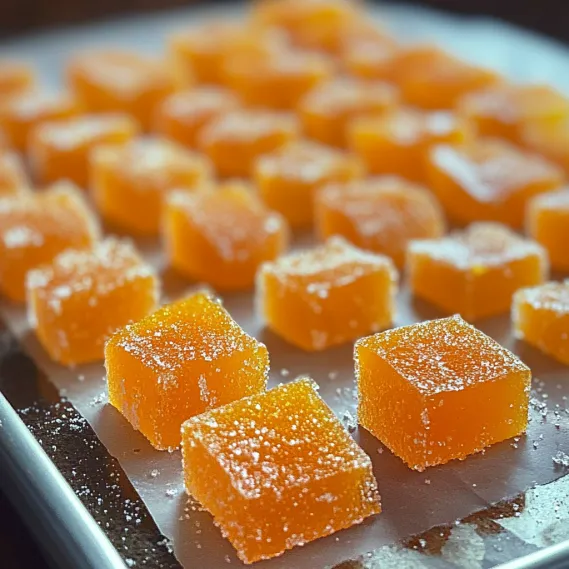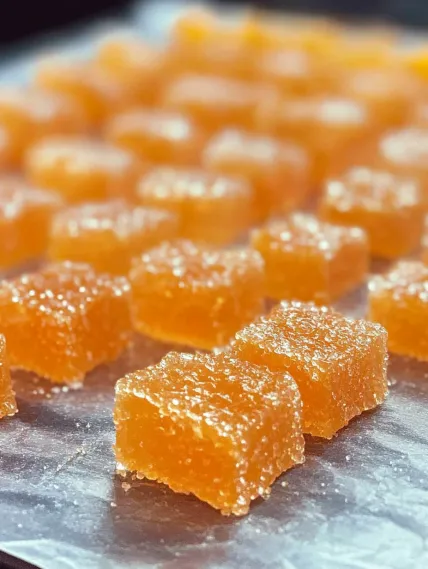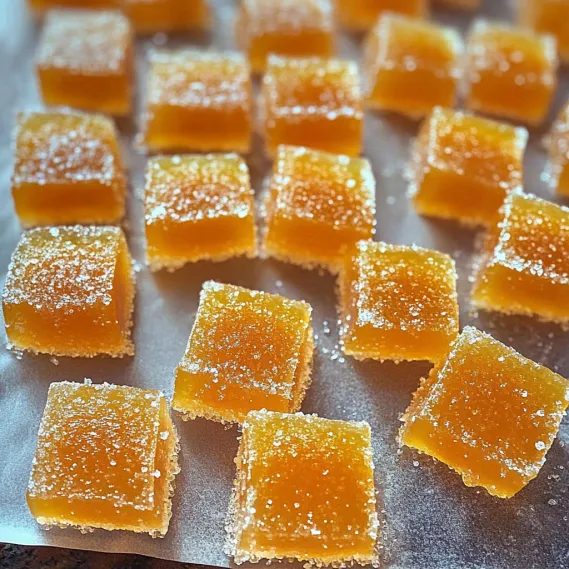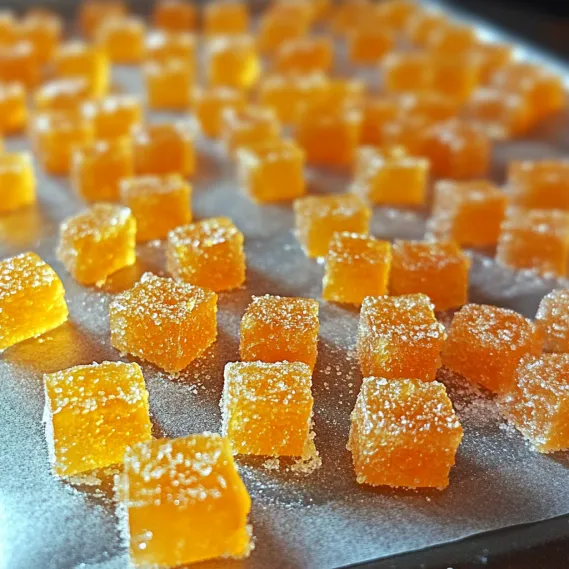 Pin
Pin
Old Fashioned Orange Candy brings bright, sunshine flavor into glistening hard candy that shatters with satisfying crack. This vintage treat captures citrus essence in each amber shard, offering both aromatic oils from zest and concentrated flavor from extract. Homemade candy has charm commercial versions can't match.
I first made this recipe when looking for an impressive yet manageable dish for weekend entertaining. After experimenting with various cuts of shrimp and butter combinations, this version became an instant favorite. My husband declared them the best scampi he's ever tasted, and now guests always request them at our gatherings.
Essential Ingredients and Selection Tips
- Orange Zest: Use organic oranges; wash thoroughly before zesting
- Cream of Tartar: Prevents crystallization for smoother texture
- Light Corn Syrup: Ensures glass-like texture rather than graininess
- Orange Extract: Choose high-quality pure extract for authentic taste
- Candy Thermometer: Essential for perfect hard-crack temperature
I've found that adding a small amount of chicken powder (bouillon) makes a significant difference in achieving that authentic takeaway flavor. If you don't have it, mushroom powder makes an excellent substitute that adds similar umami depth without changing the overall profile of the dish.
Detailed Cooking Instructions
- Step 1: Prepare Your Workspace
- Line baking sheet with parchment and grease lightly. Measure ingredients in advance and have thermometer ready. Organization is crucial since you'll work quickly once candy reaches temperature.
- Step 2: Capture the Orange Essence
- Zest oranges with Microplane, avoiding bitter pith. Press zest between paper towels to remove moisture. Fresh zest provides vibrant flavor and beautiful flecks throughout candy.
- Step 3: Cook the Sugar Mixture
- Combine sugar, corn syrup, water, and cream of tartar in heavy saucepan. Stir until dissolved, then stop stirring. Boil undisturbed until mixture reaches 300°F-310°F.
- Step 4: Add Flavors and Pour
- Remove from heat and quickly stir in zest, extract, and optional coloring. Pour immediately onto prepared sheet without scraping pan. Spread to desired thickness.
- Step 5: Cool and Break
- Allow candy to cool completely in draft-free area. Once hardened, break into irregular shards by flexing sheet or tapping gently. Random patterns create beautiful, artisanal appearance.

My first attempt at this candy taught me the importance of precise temperature control. Initially, I rushed the process, resulting in sticky candy; higher temperature caused burning. Now I carefully monitor temperatures, ensuring the sugar mixture reaches the perfect hard-crack stage for ideal texture.
Understanding Candy Stages
At 300°F-310°F, water evaporates creating supersaturated sugar solution that forms hard, glassy texture. Lower temperature creates sticky candy; higher causes burning. Look for smaller bubbles and light amber color, but always use thermometer.

Creative Flavor Variations
Try lemon or lime zest for different citrus notes. Add ginger for warmth or rosemary for herbal sophistication. Incorporate cinnamon and clove for holiday versions reminiscent of mulled oranges.
Elevating Your Presentation
Dip one edge in tempered chocolate. Use crushed candy as cocktail rim garnish. Create stunning cake decorations with larger shards arranged in buttercream for stained-glass effect.
Troubleshooting Common Issues
Cloudy candy indicates crystallization - keep sugar crystals from falling back into pot. Sticky candy means temperature was too low. Bitterness suggests overcooking - remove from heat immediately at target temperature.

Chef's Helpful Tips
- Infuse sugar with zest overnight to intensify flavor
- Add tiny pinch of salt to enhance brightness
- Use oiled scissors for controlled shapes
- Work in small batches for consistent results
- Cool in draft-free area to prevent clouding
Recipe FAQs
- → Do I need a candy thermometer to make this recipe?
- While a candy thermometer is highly recommended for accuracy, you can use the cold water test if you don't have one. Drop a small amount of the syrup into cold water - it should form hard, brittle threads that snap easily when bent (hard crack stage). However, a candy thermometer takes the guesswork out of the process and greatly increases your chances of success, especially if you're new to candy making.
- → Why did my candy turn cloudy instead of clear?
- Cloudiness usually happens when sugar crystals form during cooling. To prevent this: 1) Avoid stirring after the sugar dissolves, as stirring can cause crystallization, 2) Brush down any sugar crystals on the sides of the pan with a wet pastry brush, 3) Add corn syrup and cream of tartar as directed (these ingredients help prevent crystallization), 4) Avoid scraping the pan when pouring the hot mixture onto the baking sheet, and 5) Don't move or disturb the candy while it's cooling.
- → How long will this candy stay fresh?
- When stored properly in an airtight container in a cool, dry place, homemade hard candy can last for 6-8 weeks. For longer storage, separate layers with wax paper or parchment to prevent sticking. Avoid storing in humid environments or refrigerators, as moisture can make the candy sticky or cause it to lose its hard texture. If the candy becomes sticky over time, a light dusting of powdered sugar can help.
- → Can I use other citrus flavors instead of orange?
- Absolutely! This recipe works beautifully with lemon, lime, grapefruit, or even tangerine. Simply substitute the zest and extract with your preferred citrus. For lemon candy, use lemon zest and lemon extract; for lime, use lime zest and lime extract, and so on. You can also create mixed citrus candies by combining different zests. Just remember to adjust the food coloring accordingly if you're using it.
- → Why is my candy not hardening properly?
- If your candy remains soft or sticky after cooling, it likely didn't reach the proper temperature. Hard candy needs to reach between 300°F and 310°F (the hard-crack stage). Cooking at too low a temperature or removing from heat too soon results in softer candy. Altitude can affect candy making, so if you live at high elevation, you may need to cook to a slightly lower temperature. Humidity can also prevent proper hardening, so try making candy on a dry day for best results.
